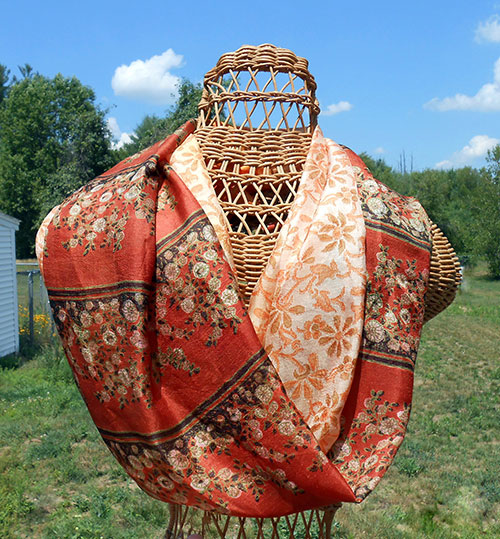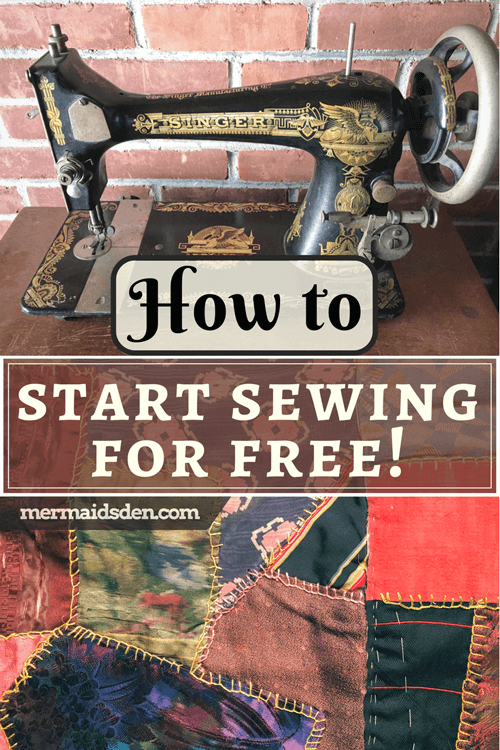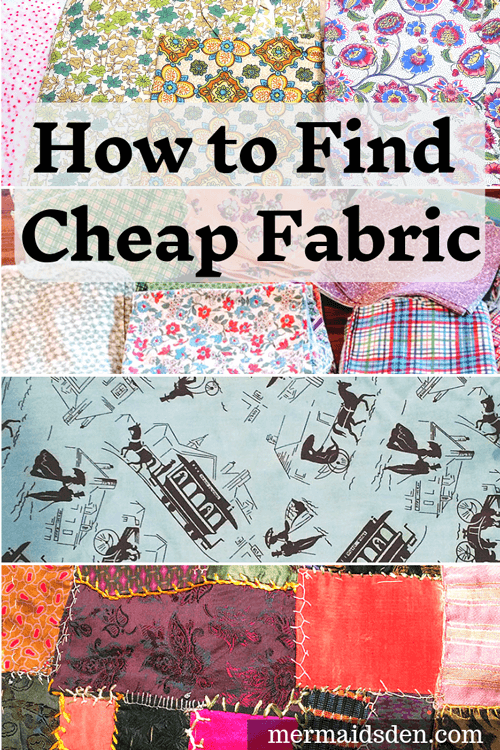How to Start Sewing for Free
In this post, I'll break out all my best tips for finding sewing supplies for free (or really cheap). I wanted to get into sewing for a long time, but I kept putting it off because the hobby seemed expensive. Getting a sewing machine looked like it was going to be at least $100 or more, and then you still need thread, needles, fabric, patterns, an iron, and so on just to get started.
And then what if it turns out you don't really like sewing? You've spent all that money just to be disappointed. So I kept hemming and hawing over it.
Well, I'm going to tell you how to get started without spending (much) money. If you're patient and attentive, you can get almost all of your supplies for free. I do recommend buying thread and needles, but I'll tell you how to get the best deals on those.
Disclosure: This post contains affiliate links, which means I may receive a percentage if you make a purchase using these links. This won’t cost anything extra to you. I only link to things I like and use, and the proceeds help me to run this blog. Thank you for supporting me!
Get a Free or Cheap Sewing Machine
Where to Look:
- Check out your local Freecycle. You can view posts from you local group without creating an account, so you can get a sense of how active the group is and what kinds of things are posted. To claim anything, you'll need to create an account. Once you've created an account, you can also choose to get updates and notifications on new posts via email. You can also let the community know that you're looking for something, like a sewing machine.
- Check out your local Craigslist. Search for sewing machines. Once you put in the search, you can limit it by number of miles from your zip code. You can also set your price range. Then click "Save Search" next to the search bar at the top of the page. Now you can choose to receive an email every time a new sewing machine is listed in your area within your price range. I've seen free sewing machines and very cheap sewing machines.
- Check out your local Facebook Buy, Sell, and Trade and/or Yardsale pages. Again, you may very well find a free or cheap sewing machine, and some pages will let you list items that you're in search of. I've seen free sewing machines listed on Freecycle, Craigslist, and Facebook. They go quickly, but if you keep your eyes out, you can be the one to snag it.
- Let friends and family know that you're looking for one. Some people have an extra or one that they never use. I've gotten four sewing machines for free, just because people know that I like to sew.
- Check out local antique shops, thrift stores, consignment shops, auctions, and flea markets. If you're willing to buy a sewing machine, you can find a used one for $10-60. I wouldn't spend more than that. They turn up often enough that you can be picky. At one point in time, practically every single household in America had at least one sewing machine. Nowadays, they're not as much of a household staple, but they show up secondhand all the time.
- Check out Ebay/Etsy. There are lots of sewing machines for sale online, but shipping is often prohibitive. You might find something cheap with a local pickup option, though.
- Check out Goodwill's online auction listings. I've seen a number of sewing machines ending at less than $10. However, shipping is expensive; you're looking at around $50 or more.
What Kind of Sewing Machine Should I Get?
If it's free, just take it. If you can't get it running or find a manual, you can always donate it or give it away.
If it costs money, see my posts on:
Long story short, I'd recommend a vintage Singer or a vintage Kenmore. Both of these are fairly common, and there's lots of information online to help you troubleshoot it and learn how to use it. They typically take standard needles and bobbins.
When you're at the store, pick it up. Is it surprisingly heavy? That means it's all metal inside. Metal gears and parts don't wear out as fast as plastic ones. If it's light, don't get it. Turn the handwheel. Does the needle go up and down? Do the feed dogs move back and forth? Is there a bobbin and bobbin case underneath the needle plate? Are there any obvious missing parts?
If it seems to be in good shape and the price is right, go ahead and get it. Even if it needs a bit of work, you should be able to figure out most simple fixes with a bit of Googling.
If you want a more modern machine, I recommend this mechanical sewing machine by Janome. It looks like a solid machine for a relatively low price, and I've been impressed by the quality of modern Janome sewing machines.
Get Free or Cheap Fabric
Again, check your local Freecycle, Craigslist, and Facebook pages. I've seen free fabric listed in all of these places before. It's usually scraps or leftover pieces from projects, but you can still use these.
You'll also find craft swaps online in forums and on social media. Join some sewing groups, and you may be able to get involved in fabric swaps or giveaways. Follow fabric shops on social media as well.
See my post on finding cheap fabric for more help getting free and cheap fabric. To summarize, secondhand shops are your friend. Be sure to check out bed sheets and linens at thrift stores, as these can be a good source of cheap fabric. Some thrift stores have fabric for sale as well. Sign up for coupons with Joann Fabrics and other big box stores to get discounts.
Get Cheap Thread
I frequently see vintage thread for sale in thrift shops, but thread is one of those things that doesn't age well. Vintage thread weakens over time, and most of the time, you can't use it. See my post on how to tell if you can still use vintage thread.
The problem with most cheap thread is that it's of poor quality, so you really want to get something good like Gutermann Sew All or Coats and Clark Dual Duty. The best place to get cheap thread is Wawak. If you have a coupon, you can also buy a box set of thread at Joann Fabrics, which will make it pretty affordable. Also watch for thread sales at Joann Fabrics.
Get Cheap Needles
Needles also wear out and should be changed approximately every 4-6 hours of sewing. Again, it's a good idea to save up your coupons for this or wait for a sale at Joann Fabrics.
You an also buy in bulk on Amazon. I recommend this box of 100 Universal Schmetz 90/14 needles, which are a standard size that can be used for most sewing projects. I have a box of these, and I've been using it for years. I'm not even halfway through them yet.
Get a Cheap Iron and Ironing Board
Your best bet is to check out a thrift shop or consignment shop. My local Salvation Army almost always has a few ironing boards, and irons turn up every so often as well. They may not be the best quality, but they'll work when you're just getting started.
Get Free Sewing Patterns and Tutorials
Pinterest is my favorite place to find free sewing patterns and tutorials. Check out Free Sewing Patterns on Pinterest, Free Sewing Tutorials on Pinterest, and my board for the Mermaid's Den, which has a lot of sewing patterns and tutorials as well.
See also my post on free sewing tutorials for beginners.
Get Free Sewing Books
There are a bunch of free public domain ebooks on sewing. See my post on how to find free vintage sewing books.
Next Steps: Get a Budget Serger
Once you've been sewing for awhile, you may decide that you want a serger. Sergers can be expensive, but I discovered a budget serger: the Singer Tiny Serger. It goes for around $50-60 on Ebay, and it doesn't have a lot of bells and whistles, but it does a good basic overlock stitch.
I hope these tips help you to start sewing on a budget! Let me know if you have any other tips to share.


















